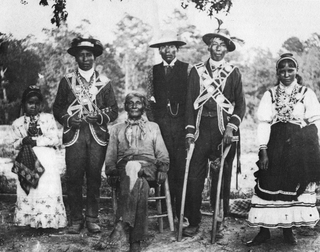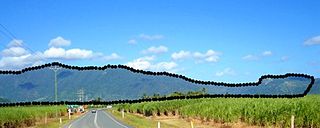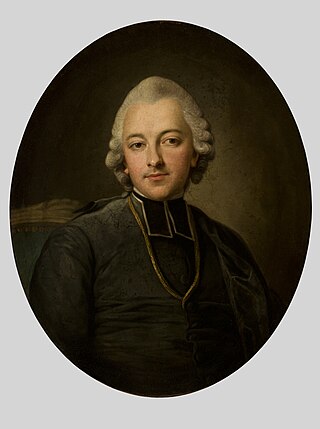Footnotes
- ↑ Mudrooroo (1994). Aboriginal mythology: An A-Z spanning the history of the Australian Aboriginal people from the earliest legends to the present day. London: Thorsons. pp. 11–12. ISBN 978-1-85538-306-7.
In Arrernte mythology, Karora is a bandicoot ancestral deity. According to one legend, during the Dreamtime Karora lay sleeping in the earth when from his head rose a tall pole called a tnatantja. It was a living creature, its bottom resting on his head and its top reaching up into the sky. From his armpits and navel emerged bandicoots, who dug their way out of the earth just as the first sun rose into the sky. Karora followed them, seized two of the animals, then cooked and ate them. His hunger sated, he lay down to sleep again and a bullroarer emerged from under his armpit. It took on human form and grew into a young man, and when Karora woke his son danced around him. It was the very first ceremony.
Karora's son hunted for bandicoots, which they cooked and ate, then Karora slept again and created two more sons. This continued for some time, with many more sons emerging. Eventually, all of the bandicoots Karora had created had been eaten, and the men became hungry. They hunted, but could find no game. On their way back, they heard the sound of a bullroarer, and as they searched for the source of the noise they caught sight of a sandhill wallaby. They threw their tjuringa sticks at it and broke its leg, and the sandhill wallaby called out that he was now lame and a man like them, not a bandicoot. He limped away.
The hunters continued on their way and saw Karora approaching them. He led them back to the waterhole, and as they sat at the edge of the pool a great flood of honey from the honeysuckle buds engulfed them. Karora remained at the pool, but the sons were washed away to where the sandhill wallaby man they had lamed waited for them. The place became a great djang (sacred) place, and to this day one can see the brothers grouped around the sandhill wallaby man's body — a group of rocks positioned around a great boulder.
Karora is said to remain at the waterhole, where he lies in eternal sleep. Those who come to drink there must carry green boughs, which they lay down on the banks before quenching their thirst. [1]

The bunyip is a creature from the aboriginal mythology of southeastern Australia, said to lurk in swamps, billabongs, creeks, riverbeds, and waterholes.
In Greek mythology, Litae were personifications of prayers offered up in repentance and were ministers of the god Zeus. They were described as hobbling, old women. Their opposite number was Ate, the spirit of delusion and folly, in whose wake they followed.

Choctaw mythology is part of the culture of the Choctaw, a Native American tribe originally occupying a large territory in the present-day Southeastern United States: much of the states of Mississippi, Alabama, and Louisiana. In the 19th century, the Choctaw were known to European Americans as one of the "Five Civilized Tribes" even though controversy surrounds their removal.
Lakota mythology is the body of sacred stories that belong to the Lakota people, also known as the Teton Sioux.

Australian Aboriginal religion and mythology is the sacred spirituality represented in the stories performed by Aboriginal Australians within each of the language groups across Australia in their ceremonies. Aboriginal spirituality includes the Dreamtime, songlines, and Aboriginal oral literature.

In Aboriginal cultures of south-east Australia, Daramulum is a sky hero associated with Baiame, and an emu-wife. He is a shapeshifter.
The Wawalag sisters, also written as WauwalukWawilakWaggilak, Wagilag, or Wawalik, are ancestral creator beings whose story is part of widespread sacred rituals in the Aboriginal culture from Arnhem land, Northern Territory, Australia.

The bullroarer, rhombus, or turndun, is an ancient ritual musical instrument and a device historically used for communicating over great distances. It consists of a piece of wood attached to a string, which when swung in a large circle produces a roaring vibration sound.

Fables and Parables, by Ignacy Krasicki (1735–1801), is a work in a long international tradition of fable-writing that reaches back to antiquity.
There have been many accounts of the origin of language in the world's mythologies and other stories pertaining to the origin of language, the development of language and the reasons behind the diversity in languages today.

The Bidawal were an Australian Aboriginal tribe of Gippsland, Victoria. According to Alfred William Howitt, the Bidawal were composed of "refugees from tribes".
There are a vast array of myths surrounding the Blackfoot Native Americans as well as Aboriginal people. The Blackfeet inhabit the Great Plains, in the areas known as Alberta, Saskatchewan, and areas of Montana. These stories, myths, origins, and legends play a big role in their everyday life, such as their religion, their history, and their beliefs. Only the elders of the Blackfoot tribes are allowed to tell the tales, and are typically difficult to obtain because the elders of the tribes are often reluctant to tell them to strangers who are not of the tribe. People such as George B. Grinnell, John Maclean, D.C. Duvall, Clark Wissler, and James Willard Schultz were able to obtain and record a number of the stories that are told by the tribes.
Inca mythology is the universe of legends and collective memory of the Inca civilization, which took place in the current territories of Colombia, Ecuador, Peru, Bolivia, Chile, and Argentina, incorporating in the first instance, systematically, the territories of the central highlands of Peru to the north.

In Australian Aboriginal religion and mythology, Crow is a trickster, culture hero and ancestral being. In the Kulin nation in central Victoria he is known as Waang and is regarded as one of two moiety ancestors, the other being the more sombre eaglehawk Bunjil. Legends relating to Crow have been observed in various Aboriginal language groups and cultures across Australia.
Bluetongue Lizard is an old man in the Australian Aboriginal mythology of the Warlpiri people. He is a trickster and a powerful sorcerer, as well. The myth involving him is the wellspring of the Warlpiri fire ceremonies. He is often regarded as a deity, but this notion is not exactly true. At night time he flies and he goes to Habberfield

The Gugu Badhun are an Aboriginal nation whose country is located in the Upper Burdekin region of northern Queensland. Gugu Badhun country is approximately 220 km northwest of Townsville and includes the small township of Greenvale as well as a number of pastoral stations. The most comprehensive and up-to-date description of the nation is found in the book Gugu Badhun: People of the Valley of Lagoons, published in 2017.
The Ngugi are an Aboriginal Australian people, one of three Quandamooka peoples, and the traditional inhabitants of Moreton Island.

The Bardi people, also spelt Baada or Baardi and other variations, are an Aboriginal Australian people, living north of Broome and inhabiting parts of the Dampier Peninsula in the Kimberley region of Western Australia. They are ethnically close to the Jawi people, and several organisations refer to the Bardi Jawi grouping, such as the Bardi Jawi Niimidiman Aboriginal Corporation Registered Native Title Body and the Bardi Jawi Rangers.
Long Jack Phillipus Tjakamarra, occasionally referred to as Kumantjayi Long Tjakamarra, was a Ngalia/Warlpiri man and a founding member of the Papunya Tula art cooperative. His contribution to the Honey Ant Dreaming mural would help define and catalyze the art style of the Western Desert Art Movement.